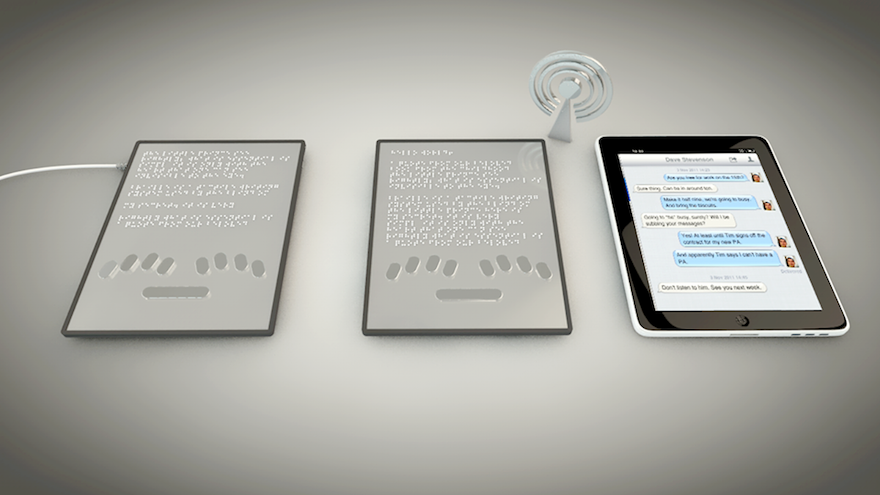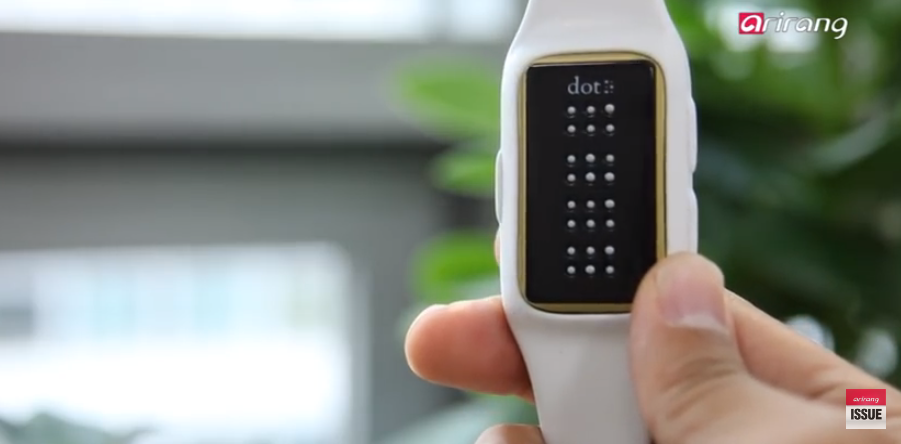Explore High-Tech Glasses for the Visually Impaired and Their Benefits
Explore High-Tech Glasses for the Visually Impaired and Their Benefits
Blog Article
Discover Cutting-edge Tools Created for the Visually Impaired
The advancement of innovative tools for the aesthetically impaired stands for a significant advancement in ease of access and freedom. Technologies such as clever glasses with AI abilities and mobile applications designed to offer auditory descriptions are improving day-to-day experiences for individuals. Additionally, wearable gadgets that use haptic comments improve environmental recognition, while modern Braille innovations use brand-new means to engage with message. As these devices remain to evolve, their influence on the lives of those with visual problems elevates essential concerns regarding the future of inclusivity and autonomy in numerous facets of life. What lies ahead in this technological landscape?
Smart Glasses for Navigating

Smart glasses designed for navigating are changing the means aesthetically damaged people connect with their atmosphere. These sophisticated devices utilize a mix of video camera technology, expert system, and auditory feedback to provide real-time info concerning environments. By employing barrier discovery systems, smart glasses can inform users to possible dangers, making it possible for much safer mobility in both familiar and unfamiliar settings.
The combination of GPS innovation additionally boosts navigation capacities, permitting individuals to receive acoustic instructions as they relocate. This hands-free approach not just fosters self-reliance but additionally empowers aesthetically impaired individuals to browse metropolitan landscapes with boosted confidence. Furthermore, many wise glasses are outfitted with features that identify spots and road indicators, providing contextual details that improves the customer experience.
Moreover, the development of these tools is constantly advancing, with firms functioning to boost the precision of object acknowledgment and increase the series of navigational attributes. As smart glasses come to be much more easily accessible and economical, they hold the possible to considerably change day-to-day life for aesthetically impaired customers. Eventually, these cutting-edge devices represent a crucial action towards inclusivity, offering enhanced mobility and a higher feeling of freedom for individuals browsing the globe around them.

Mobile Application for Daily Living
How can mobile applications enhance the day-to-days live of aesthetically impaired individuals? Mobile applications are transforming the method aesthetically damaged customers browse their atmospheres, manage day-to-day jobs, and gain access to information. These applications provide essential support through different functionalities, fostering independence and boosting lifestyle.
Several cutting-edge mobile applications are created particularly for day-to-day living. Apps like Be My Eyes connect aesthetically damaged customers with sighted volunteers via video clip phone calls, enabling them to get real-time aid with jobs such as checking out labels or navigating strange rooms. In A Similar Way, Seeing AI, created by Microsoft, makes use of synthetic intelligence to describe surroundings, reviewed text, and determine things, properly changing a smart device into an effective device for day-to-day assistance.
In addition, navigating apps customized for the aesthetically damaged, such as Aira and BlindSquare, use audio-based directions and environmental details, allowing users to traverse their surroundings securely and confidently. Beyond navigation and prompt assistance, mobile applications likewise sustain company and task management, with features that assist users establish pointers, produce to-do checklists, and track appointments. In summary, mobile applications work as vital resources, equipping visually impaired people to lead more independent and fulfilling lives.
Wearable Technologies for Aid
Empowerment through technology is increasingly obvious in the realm of wearable devices designed to assist visually damaged individuals. These cutting-edge tools integrate seamlessly right into every day life, boosting navigating and offering crucial feedback to customers. For instance, wise glasses outfitted with cameras can recognize faces and check out message aloud, allowing customers to engage even more with confidence in expert and social settings.
One more notable improvement is making use of haptic responses systems in wearable tools. These systems utilize vibrations or other tactile signals to share information regarding the customer's atmosphere, such as challenges or adjustments in surface, improving mobility and safety and security. Wearable innovations also include wristbands that attach to smart devices, alerting customers to alerts through refined vibrations, thus boosting connectivity without dependence on aesthetic hints.
As these innovations proceed to evolve, they are not only improving self-reliance for aesthetically damaged people however likewise cultivating a better sense of addition in culture. By linking the void in between obstacles encountered in day-to-day living and the capacity for freedom, wearable modern technologies act as critical tools in the pursuit for equality and empowerment for those with aesthetic problems.
Sound Summary Devices
Audio description tools play an essential role in boosting availability AI-powered visual aids for visually impaired individuals, supplying them with the capacity to involve with aesthetic media. Smart glasses for the visually impaired. These tools supply narrated descriptions of key visual elements in movies, tv programs, and live performances, making certain that users can fully understand the context and feelings conveyed via visuals
Sound summary can be integrated into numerous systems, including streaming services, cinema testings, and live movie theater. Many prominent streaming services currently consist of audio summary as an access function, permitting viewers to select it easily. In addition to mainstream media, specialized applications additionally exist, providing audio summaries for art exhibitions, galleries, and other social occasions.
The performance of audio description depends upon the skill of the storytellers, who have to communicate visual details succinctly without interfering with the initial sound. Technologies in this field are also leading the way for more personalized experiences, where individuals can adjust the degree of detail and pacing according to their choices.
Braille Innovations and Instruments
Braille advancements and tools have dramatically changed the way aesthetically impaired people engage with message and details. Modern developments have led to the development of functional tools that improve literacy and freedom among individuals.
Additionally, mobile Braille notetakers integrate typical Braille input with modern functionalities, helping with note-taking, organizing, and paper modifying on the move. Mobility aids for visually impaired users. These compact devices usually feature text-to-speech capacities, bridging the void between Braille and acoustic details
Additionally, innovative Braille printers have actually emerged, enabling individuals to create Braille labels, files, and educational materials successfully. This availability fosters greater engagement in specialist and educational settings, ultimately promoting inclusivity.
Furthermore, research study right into wise Braille innovations remains to increase. Instruments that integrate expert system are being explored to provide real-time navigation assistance and contextual details, improving the customer experience in varied setups. In general, these technologies mirror a commitment to encouraging visually damaged people via technology, ensuring they can quickly accessibility and engage with the world around them.

Conclusion
The improvement of ingenious devices for the visually damaged dramatically improves freedom and quality of life. These modern technologies not just foster higher inclusion however likewise advertise autonomy in daily tasks, ultimately contributing to a much more equitable and easily accessible culture for visually damaged people.
As clever glasses end up being much more economical and available, they hold the possible to significantly change day-to-day life for visually damaged individuals. Mobile apps are changing the method aesthetically impaired users navigate their atmospheres, handle daily tasks, and gain access to info. Apps like Be My Eyes attach visually impaired individuals with sighted volunteers via video calls, allowing them to receive real-time help with jobs such as checking out labels or browsing unknown rooms.Furthermore, navigation apps customized for the visually impaired, such as Aira and BlindSquare, supply audio-based directions and ecological info, allowing users to traverse their environments safely and with confidence.The innovation of innovative devices for the aesthetically damaged considerably boosts independence and high quality of life.
Report this page